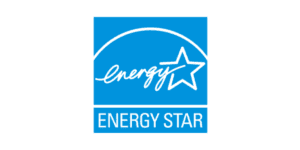
Company News
Written on 16.11.22

There are many ways an organisation can save energy and meet its sustainability goals at the same time, however, print management might not be the first thing that comes to mind straight away.
In today’s climate of rising energy bills, making your company’s printing processes more efficient can save you both time and money, as well as having a significant impact on a hefty electric bill. Did you know that the average small office printer consumes from 10 to 50 watts an hour? And for large business printers, it can be anywhere between 1000 to 3000 watts an hour? How much do you think your organisation consumes based on this figure?
Due to the amount of energy printers consume in general they should definitely not be overlooked as a vital part of any organisation’s operations, and if managed incorrectly, could have a considerable effect on your company’s finances.
There are, of course, other factors to consider that can also hike up the price of your energy bills, such as consumables. Do you know how your print fleet is being used and on what scale? For example, the amount of colour or mono prints produced, duplex or simplex etc., this usage will obviously also have an effect on how much energy you use overall.
Luckily, there are a few simple ways of saving energy and money on your print costs and this blog aims to show you how.
Here are the top 5 ways that will help you reduce your energy bills
By conducting a relatively, straight forward print audit, you can identify where you are haemorrhaging money in terms of your printing systems. A managed print service provider (MPS) can conduct a print audit on your behalf, which takes the hassle out of doing it yourself and can also ensure that an accurate and thorough assessment is carried out. This will identify where you are spending the most and least, in terms of cost per copy and footprint, by determining which machines are being utilised the most, and how they are being used – this useful information will save you money in the long run.
Certain departments within your organisation may only require a device with a small footprint, perhaps a small team of six, whereas a larger department, such as marketing, may need to print a lot more regularly and require finishing equipment also. It is highly beneficial to know where to allocate your Multi-Function Devices (MFD) throughout your organisation and streamline your fleet, so that they are being used in the most cost effective and efficient way. Also placing printers in a centralised location rather than in every office for example, can deter your employees from endlessly printing unnecessary documents, by making these devices less accessible. This will not only save you money on hardware, but also on software and subscription spending, on top of already saving you money on your utility bills.

So, you’ve identified areas for improvement within your organisation, but what about your current machines? Do they have the capabilities of optimising your workflow processes, as well as being energy efficient and cost saving? You may have to upgrade some of your fleet, or perform a complete overhaul, based on the outcome of this information. Your MFDs might be working well enough, but is it in the interest of your company’s bottom line and sustainability goals?
Fortunately, there are many energy-efficient options on the market to make your print fleet ‘greener’ and more economical. When choosing an MFD, a sure-fire way of identifying a ‘green’ machine is by catching sight of the energy star label, which shows that an MFD is approved energy efficient by industry standards and guidelines, ensuring that its energy consumption is low. These MFDs will include an array of energy-saving strategies, such as longer sheet capability, sleep mode, duplexing, proximity sensors, among many other features, that should help simplify workflow processes without compromising on sustainability.
Did you know that the average office worker uses 10,000 sheets of copy paper each year? Of which 6,800 out of the 10,000 are wasted? How is this possible? You may ask. The short answer is because of the unnecessary printing of emails, incorrect prints, printing duplicates and failing to use the duplex and mono function.
However, this can all be avoided with Follow Me print software such as PaperCut and File Director. With this software, you can set your company’s very own print rules, like defaulting to duplex (double sided) black and white and also limiting the amount of users. For example, when an employee needs to print an e-mail, it can be automatically set to print on both sides in mono, as opposed to single paged and in colour with individual quotas per user. Furthermore, this software also offers additional benefits of a more secure and private way of digitizing documents from scans and provides analytics, as each copy is logged centrally with all relevant print data, which can later be utilised to make improvements to the inefficiencies of your workflow processes – minimising wasted prints cost clicks and electricity over time.
So, what is the Cloud and how can it reduce your energy bills? Cloud computing is a secure and flexible way for organisations to store, access and share digital documents and information, without the intervention of print in most cases. It is the digital alternative to hard copy documents or even storing digital documents on outdated and energy inefficient on-premises servers. The storage is also massively scalable without large additional costs, which means organisations only pay for what they use, offering another avenue for cost reductions, by limiting energy wastage.
Naturally, due to less of a need to print and more of an emphasis on secure digital sharing and archiving, using the cloud will save energy, as well as being environmentally friendly. However, should there be a requirement for print, a secure network of printers connected via the internet, allows permitted users to print from anywhere, anytime, befitting the culture of today’s hybrid and flexible working practices. Overall, this will help increase your company’s sustainability and ultimately reduce your energy bills too.
In short, by reducing your print quotas and investing in an energy efficient fleet of printers, will save you money in the long run.
However, there’s still a real-world need for print, but with the evolution of hybrid and remote working, the need for other solutions have arisen, such as a space for easily accessible and secure documents to be shared digitally rather than physically via a network, which consequentially reduces company’s energy bills by reducing the amount of printing and carbon emissions.
By adopting a holistic approach and combining print and digital transformation processes, companies can drastically save energy as well as increasing their productivity through more efficient and streamlined workflow systems, and that is where Aurora can help.
We will provide you with the advice and expertise from a team of dedicated specialists, who will assist you with developing optimised print and IT infrastructures that are secure and more efficient. We will tailor and implement a strategy to meet your business needs in an ever-changing environment, that is scalable, easy to manage and you will have direct access to a team of engineers, should you need their assistance, along with our speedy customer support.
For more information, visit us here, call us on 020 7503 3000 or e-mail generalenquiries@aurora.co.uk